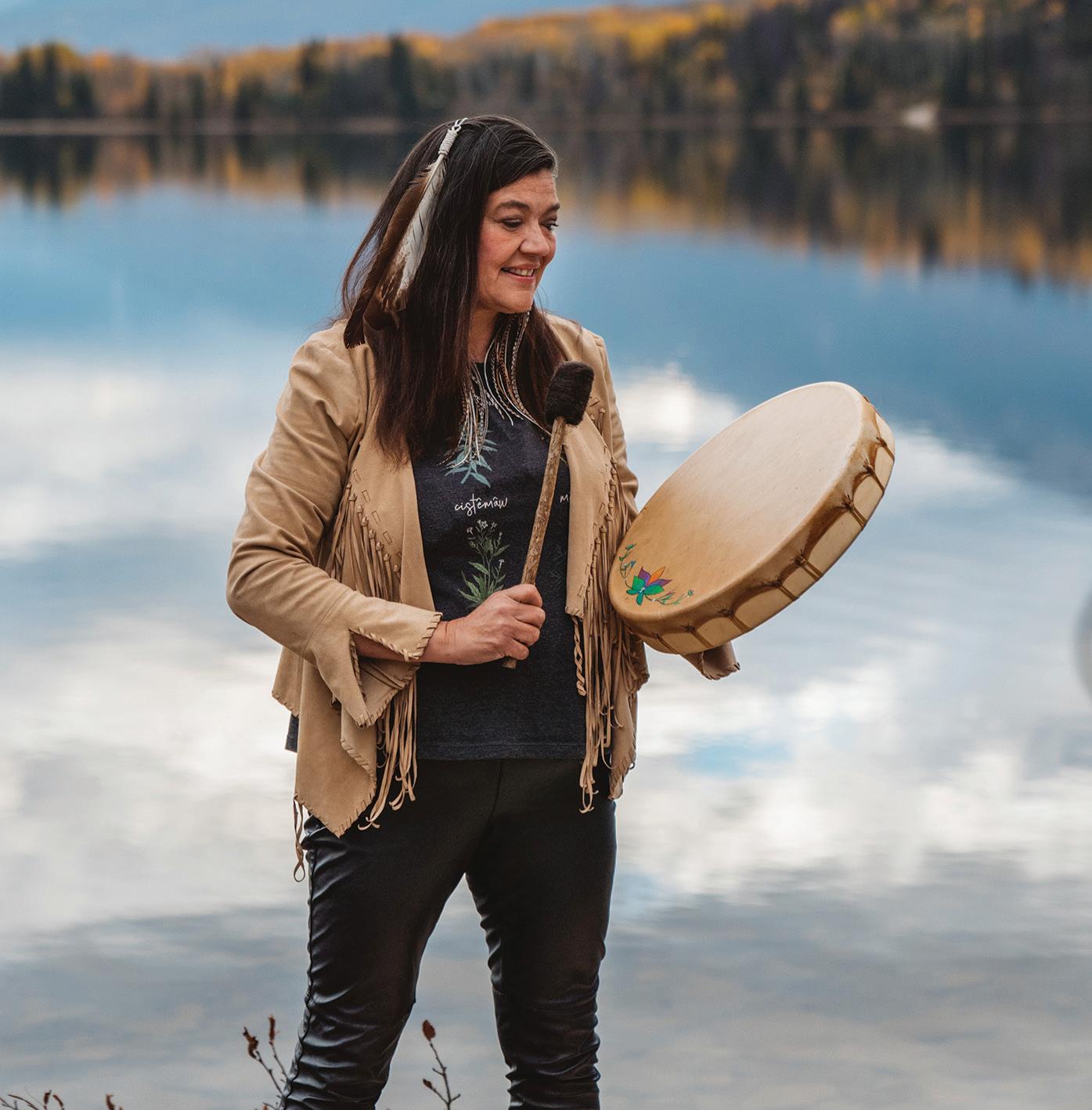
2 minute read
Warrior Women
Steve
Icome from a small reserve called Sturgeon Lake Cree Nation. I am a Cree Indian, I speak Nehiyawewin, which is one of the Cree dialects, and my traditional name translates into ‘She Who Moves Mountains,’” says Matricia Bauer, the founder of Jasperbased company, Warrior Women.
Matricia is an in-demand women: her many roles include tourism guide, drummer, singer, storyteller, artist, educator and ‘Indigenous Knowledge Keeper’. She also uses beads and leather to make traditional Moccasins.
Plus she works with Parks Canada, is on the board of Jasper’s Chamber of Commerce and the Tourism Industry Association of Canada and is a member of both Indigenous Tourism Alberta and Indigenous Tourism Association of Canada.

Somehow she finds time to invite tourists to join her for a ‘fireside chat’ that involves songs, drumming and stories, and to walk with her into Jasper National Park to learn about the uses and medicinal values of rhe flora and plants. She also offers visitors a ‘gather and make’ tea experience.

“I share with my guests the beautiful aspects of my culture, and my journey back home to my ancestors,” she says.
During the 90-minute fireside chats, Matricia encourages client to ask questions about Indigenous topics.
“I start with drumming and singing to ease people into the environment and create a space that is welcoming.
“I bare my soul and share my own story, and by being open and honest it prompts guests to join in and engage. I create a space where we can have conversations about Indigenous issues,” She adds: “I have different drum songs: some by Indigenous women, others are English songs that I have ‘Indigenised and some are written by myself and/or my daughter Mackenzie, who sometimes sings with me and is the Director of Indigenous Tourism Alberta.”
Matricia explains that being a ‘Drum Keeper’ involves some strict protocol.
“You must never drum or sing under any type of alternate influence and you must always open the drum in a certain way.
“Drumming is spiritual and because we are connected to the Creator and he hears the drum beats and sees everything that happens around the drum there is a big responsibility when I play.
“I had to learn these things from my elders,” she says.
On her Wapakwanis plant walks, guests see the natural environment through a different lens and learn how Indigenous people use flowers, trees, shrubs and plants as food and medicine.
The experience includes making salves, lotions and soaps and participants leave with both new knowledge and a product they have developed themselves.
“Plants and flowers provide us with sovereignty over what we eat and how we can heal ourselves. Just getting exposed to the aromatics from trees is healing in itself.
“We are used to making a salad by going to a store and buying green things in a bag, but that shows how disconnected we are from our food and medicine sources.
“Guests are often surprised that you can make lip balm from three easily-found ingredients that is naturally antibacterial, and delicious tea from just two,” she says.
“My responsibility is to share my own personal story but also to let people know that it is just one Indigenous story. I can’t speak for every Indigenous person in Canada. There are 82 different tribes, with a multitude of different experiences.
“I encourage people to seek out those experiences and have an open mind and open heart to receive all the various messages coming from different sources.” warriorwomen.com










